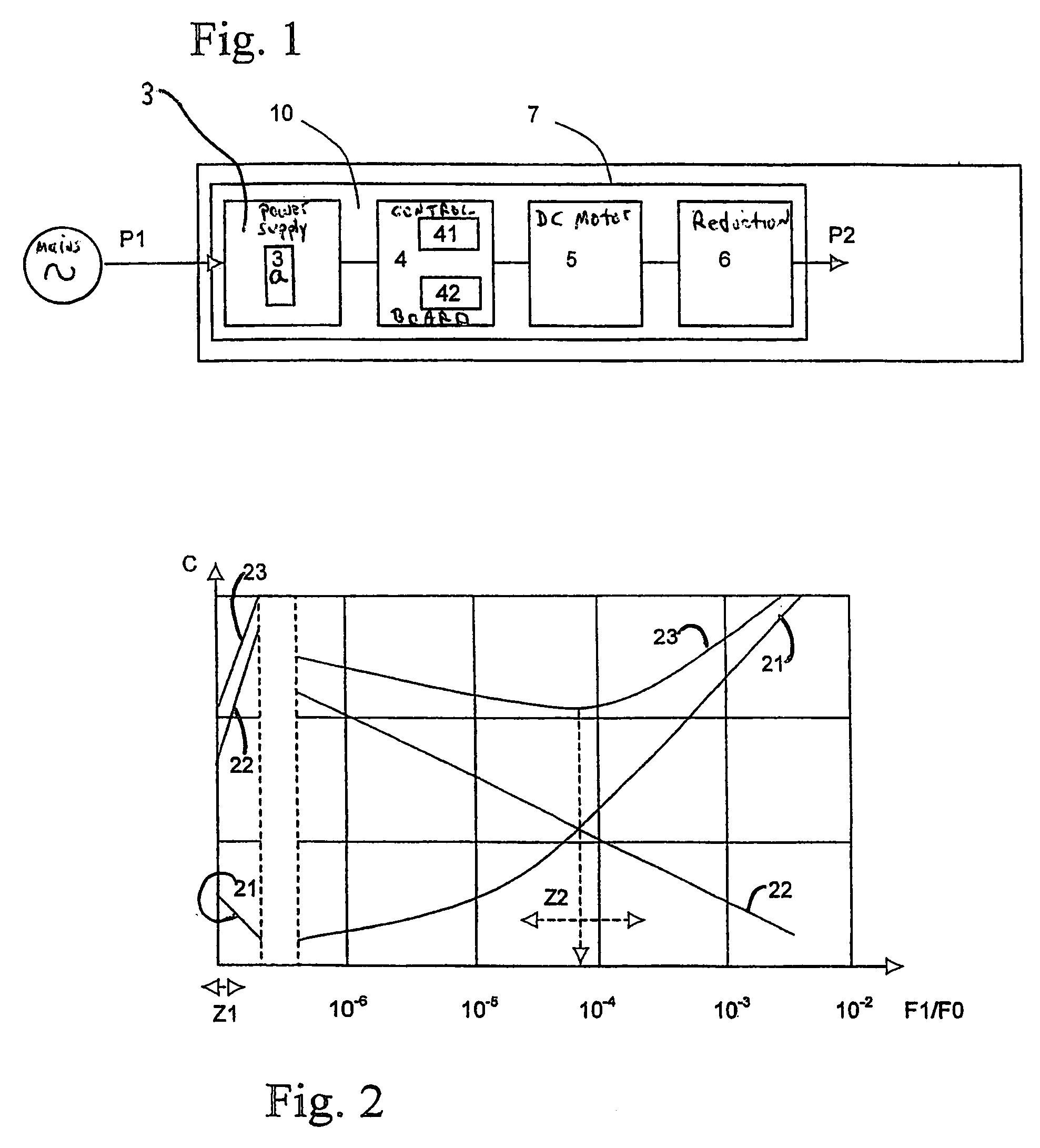Electrical actuator having a direct current motor
- Summary
- Abstract
- Description
- Claims
- Application Information
AI Technical Summary
Benefits of technology
Problems solved by technology
Method used
Image
Examples
Embodiment Construction
[0024]An actuator 10 represented in FIG. 1 takes from the AC electrical mains supply a power P1 to convert it into mechanical power P2 on an output shaft. The mechanical power P2 output is substantially lower than the electrical power P1 drawn at the input, because of losses within the actuator.
[0025]A step-down AC / DC converter 3, or power supply unit (referred to interchangeably herein) provides the required conversion from an AC low voltage into a DC extra low voltage. Naturally, its output voltage need not necessarily be strictly constant and major fluctuations associated with the frequency of the mains supply may even be accepted (for example, a ripple factor of 10 to 30%). For motor noise issues, there is nevertheless an interest in reducing this ripple.
[0026]This voltage is transmitted to an extra low voltage DC motor 5 via a control board 4 comprising in particular a radio-wave receiver 41. As in the above-mentioned prior art, the radio-wave receiver receives the control sign...
PUM
 Login to View More
Login to View More Abstract
Description
Claims
Application Information
 Login to View More
Login to View More - R&D
- Intellectual Property
- Life Sciences
- Materials
- Tech Scout
- Unparalleled Data Quality
- Higher Quality Content
- 60% Fewer Hallucinations
Browse by: Latest US Patents, China's latest patents, Technical Efficacy Thesaurus, Application Domain, Technology Topic, Popular Technical Reports.
© 2025 PatSnap. All rights reserved.Legal|Privacy policy|Modern Slavery Act Transparency Statement|Sitemap|About US| Contact US: help@patsnap.com


